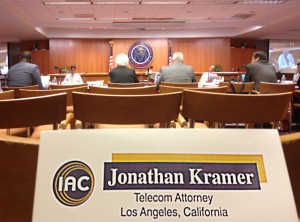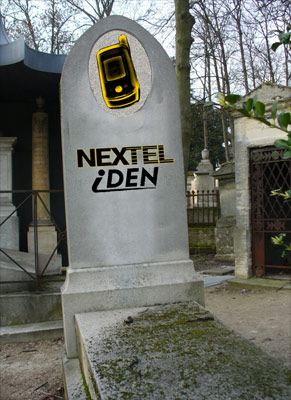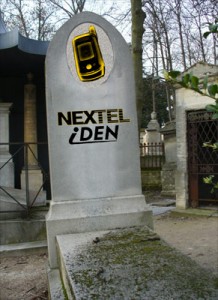Missouri local government and their residents will now be largely silenced as to the placement of wireless towers in communities.

Yesterday, Gov. Jay Nixon signed HB 331, including its “UNIFORM WIRELESS COMMUNICATIONS INFRASTRUCTURE DEPLOYMENT ACT” provisions.
HB 331 was lauded by the wireless industry and strongly opposed by the Missouri Municipal League and many local governments.
Gov. Nixon’s office released a very brief statement on Friday saying that HB 331 and HB 345 together “will provide the opportunity for expanded access and improved broadband and wireless service through more rapid deployment” of wireless and wired infrastructure.”
The Missouri Municipal League urged Gov. Nixon to veto HB 331, as did the Missouri Association of Counties.
According to published reports, the Missouri Telecommunications Industry Association said the bill will “allow the industry to improve service more quickly and standardize a sometimes slow and plodding approval process.”
As summarized by the state legislature, the UNIFORM WIRELESS COMMUNICATIONS INFRASTRUCTURE DEPLOYMENT ACT will have the following effects:
UNIFORM WIRELESS COMMUNICATIONS INFRASTRUCTURE DEPLOYMENT ACT
The bill establishes the Uniform Wireless Communications
Infrastructure Deployment Act to encourage and streamline the
deployment of broadband facilities and to help ensure that robust
wireless communication services are available throughout Missouri.
The bill:
(1) Prohibits an authority as specified in the bill with
jurisdiction over wireless communications infrastructure from
taking specified actions that could result in a non-uniform market
for wireless service in Missouri. The prohibition does not include
state courts having jurisdiction over land use, planning, or zoning
decisions made by an authority. The prohibitions include:(a) Requiring an applicant to submit information about or evaluate
an applicant’s business decisions with respect to its designed
service, customer demand for service, or quality of its service to
or from a particular area or site;(b) Evaluating an application based on the availability of other
potential locations for the placement of wireless support
structures or wireless facilities including, without limitation,
the option to add wireless infrastructure to existing facilities
instead of constructing a new wireless support structure or for
substantial modifications of a support structure or vice versa;(c) Dictating the type of wireless facilities, infrastructure, or
technology to be used by the applicant by requiring an applicant to
construct a distributed antenna system in lieu of constructing a
new wireless support structure;(d) Requiring the removal of existing wireless support structures
or wireless facilities, wherever located, as a condition for
approval of an application;(e) Imposing environmental testing, sampling, or monitoring
requirements or other compliance measures for radio frequency
emissions on wireless facilities that are categorically excluded
under the Federal Communications Commission’s rules for radio
frequency emissions under 47 CFR 1.1307(b)(1) or other applicable
federal law;(f) Establishing or enforcing regulations or procedures for RF
signal strength or the adequacy of service quality;(g) Rejecting an application in conformance with 47 U.S.C. Section
332(c)(7)(b)(4), in whole or in part, based on perceived or alleged
environmental effects of radio frequency emissions;(h) Imposing any restrictions with respect to objects in navigable
airspace that are greater than or in conflict with the restrictions
imposed by the Federal Aviation Administration;(i) Prohibiting the placement of emergency power systems that
comply with federal and state environmental requirements;(j) Charging an application fee, consulting fee, or other fee
associated with the submission, review, processing, and approval of
an application that is not required for similar types of commercial
development within the authority’s jurisdiction. Fees imposed by
an authority for or directly by a third-party entity providing
review or technical consultation to the authority must be based on
actual, direct, and reasonable administrative costs incurred for
the review, processing, and approval of an application. In no case
should total charges and fees exceed $500 for a collocation
application or $1,500 for an application for a new wireless support
structure or for a substantial modification of a wireless support
structure. An entity with jurisdiction or any third-party entity
cannot include within its charges any travel expenses incurred in a
third-party’s review of an application, and in no event can an
applicant be required to pay or reimburse an authority for
consultation or other third-party fees based on a contingency or
result-based arrangement;(k) Imposing surety requirements, including bonds, escrow
deposits, letters of credit, or any other type of financial surety,
to ensure that abandoned or unused facilities can be removed unless
the authority imposes similar requirements on other permits for
other types of commercial development or land uses;(l) Conditioning the approval of an application on the applicant’s
agreement to provide space on or near the wireless support
structure for authority or local governmental services at less than
the market rate for space or to provide other services via the
structure or facilities at less than the market rate for the
services;(m) Limiting the duration of the approval of an application;
(n) Discriminating or creating a preference on the basis of the
ownership, including ownership by the authority, of any property,
structure, or tower when establishing rules or procedures for
siting wireless facilities or for evaluating applications;(o) Imposing any requirements or obligations regarding the
presentation or appearance of facilities including, but not limited
to, those relating to the kind or type of materials used and those
relating to arranging, screening, or landscaping of facilities if
the requirements are unreasonable;(p) Imposing any requirements that an applicant purchase,
subscribe to, use, or employ facilities, networks, or services
owned, provided, or operated by an authority, in whole or in part,
or by any entity in which an authority has a competitive, economic,
financial, governance, or other interest;(q) Conditioning the approval of an application on, or otherwise
requiring, the applicant’s agreement to indemnify or insure the
authority in connection with the authority’s exercise of its police
power-based regulations; or(r) Conditioning or requiring the approval of an application based
on the applicant’s agreement to permit any wireless facilities
provided or operated, in whole or in part, by an authority or by
any entity in which an authority has a competitive, economic,
financial, governance, or other interest, to be placed at or
connected to the applicant’s wireless support structure;(2) Allows authorities to continue to exercise zoning, land use,
planning, and permitting authority within their territorial
boundaries with regard to the siting of new wireless support
structures, requirements, and with regard to applications for
substantial modifications of wireless support structures. The
authority must review, within 120 days of receiving an application
to construct a new wireless support structure or within the
additional time as may be mutually agreed to by an applicant and an
authority, the application as to its conformity with applicable
local zoning regulations and advise the applicant in writing of its
final decision to approve or disapprove the application.
Applications will include a copy of a lease or other agreement from
the property owner evidencing a right to pursue the application.
The authority must, within 120 days of receiving an application for
a substantial modification of wireless support structures, review
the application as to its conformity with applicable local zoning
regulations and advise the applicant in writing of its final
decision to approve or deny the application. Procedures for
extending these deadlines and fixing deficiencies are also
specified in the bill. A party aggrieved by the final action of an
authority or its inaction may bring an action for review in any
court of competent jurisdiction;(3) Requires an application for additions to or replacement of
wireless facilities to be reviewed for compliance with applicable
building permit requirements. Applications will include a copy of
a lease or letter or agreement from the property owner evidencing
the applicant’s right to pursue the application. The authority
must, within 90 days, review the application as to its conformity
with applicable building permit requirements and consistency with
the provisions of the act and advise the applicant in writing of
its final decision to approve or deny the application. However,
procedures for expediting or extending the deadline and for fixing
deficiencies are also specified in the bill. With regard to
collocation applications the overall deadline is 45 days with
procedures for notification and remedy of deficiencies specified in
the bill;(4) Specifies that the provisions of the bill do not authorize an
authority, except when acting solely in its capacity as a utility,
to mandate, require, or regulate the placement, modification, or
attachments of any new wireless facility on new, existing, or
replacement poles owned or operated by a utility or expand the
power of an authority to regulate any utility;(5) Prohibits an authority from instituting a moratorium on the
permitting, construction, or issuance of approval of new wireless
support structures, substantial modifications of wireless support
structures, or attachments to existing facilities of wireless
communication infrastructure if the moratorium exceeds six months
and if no good cause is shown. A moratorium must not affect
pending applications;(6) Prohibits an authority from charging a wireless service
provider or wireless infrastructure provider any rental, license,
or other fee to locate a wireless support structure on an
authority’s property in excess of the current market rates for
rental or use of similarly situated property. An authority may not
offer a lease or contract to use public lands to locate a wireless
support structure on an authority’s property that is less than 15
years in duration. A process for the resolution of any disputes
over fair market value lease payments using appraisers appointed by
both parties is also specified in the bill; and(7) Prohibits applicants for wireless facility permits from having
the power of eminent domain or the right to compel any private or
public property owner, the Department of Conservation, or the
Department of Natural Resources to lease or sell property or locate
wireless facilities on existing structures.
Here is a link to the full text of the Bill: CLICK HERE.
I know of no other enacted legislation so far reaching to exclude local participation in the wireless siting process.







